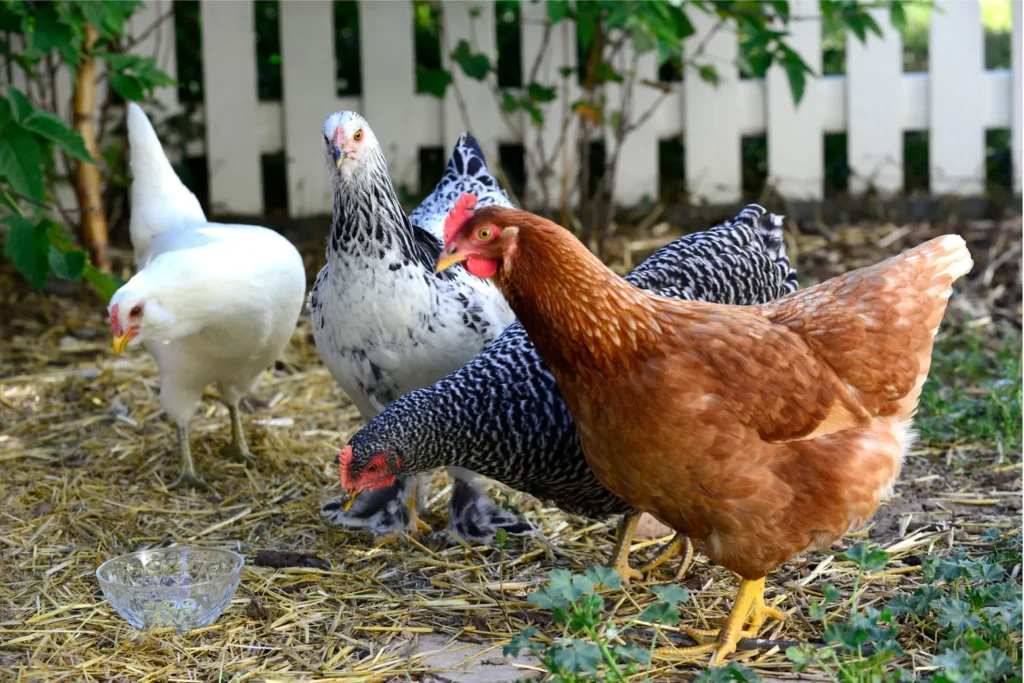
Raising backyard chickens has become a staple in the modern homestead movement—and for good reason. They’re low-maintenance, high-reward, and a perfect way to dip your toes into self-sufficiency. Whether you’re dreaming of daily eggs, natural fertilizer, or simply a more connected lifestyle, chickens are a wonderful place to start.
If you’re new to chicken keeping, this guide will walk you through everything you need to know—from choosing breeds and building a coop to keeping your flock healthy year-round.
🐔 Why Raise Backyard Chickens?
Here’s what you’ll gain from keeping chickens:
- Fresh, organic eggs daily
- Natural pest control (they eat bugs and even small snakes!)
- Garden-friendly compost from their manure
- Education for kids and adults alike
- Lower grocery bills over time
- Simple joy and companionship
🧠 Things to Consider Before Getting Chickens
Before bringing home your flock, answer a few important questions:
- Does your city/town allow chickens?
Check your local ordinances. Some places allow hens but not roosters. - Do you have space for a coop and a run?
Chickens need room to roam and scratch. - Can you commit to daily care?
Chickens need fresh water, food, and occasional coop cleaning.
🐥 Choosing the Right Chicken Breeds
There are hundreds of breeds to choose from—some lay more eggs, others are friendlier, and some tolerate cold or heat better.
🥚 Best Egg-Layers:
- Rhode Island Red: Hardy and consistent
- Leghorn: Produces lots of white eggs
- Golden Comet: Sweet and prolific
🧸 Best for Families:
- Buff Orpington: Calm and cuddly
- Plymouth Rock: Gentle and dual-purpose
- Silkies: Friendly and fluffy
❄️ Cold-Hardy:
- Wyandottes
- Australorps
- Brahmas
☀️ Heat-Hardy:
- Leghorns
- Minorcas
- Andalusians
Start with 3–6 hens for a manageable, productive flock.
🏠 Building or Buying a Chicken Coop
Your coop is their safe haven. It should:
- Be predator-proof (raccoons, hawks, and dogs are real threats)
- Provide at least 2–4 sq ft per chicken inside
- Offer 1 nesting box for every 3–4 hens
- Include roosting bars for nighttime
- Be well-ventilated but draft-free
- Be easy to clean and access
Attach a run or fenced area so your flock can scratch, dust bathe, and forage during the day.
DIY tip: Use repurposed materials like pallets, sheds, or old greenhouses to build your coop on a budget.
🥬 Feeding and Watering Your Chickens
🥣 Feed:
- Starter feed: For chicks up to 8 weeks
- Grower feed: 8–18 weeks
- Layer feed: From first egg onward (higher calcium)
Offer grains, kitchen scraps (no onions, chocolate, or citrus), and free-ranging time if possible.
Learn how to feed chickens without breaking the bank here!
🪨 Extras:
- Grit: Helps them digest
- Oyster shell or crushed eggshells: Adds calcium
💧 Water:
Fresh, clean water is crucial. In winter, use heated waterers to prevent freezing.
🧹 Cleaning and Maintenance
Keep your coop clean to avoid disease:
- Scoop poop from the coop weekly
- Deep clean once a month with vinegar and water
- Replace bedding (straw, pine shavings) regularly
- Compost the manure for garden use after aging it for 6+ months
🐓 Common Chicken Health Issues
Backyard chickens are hardy, but here’s what to watch for:
🕷️ Parasites:
- Mites and lice are common. Dust with diatomaceous earth or use herbal sprays.
💩 Digestive Issues:
- Diarrhea can mean stress, bad feed, or worms. Give probiotics and check for parasites.
🐣 Egg Problems:
- Soft shells = calcium deficiency
- No eggs = molting, stress, or poor nutrition
🧪 Respiratory Illness:
- Wheezing or sneezing may indicate infection. Quarantine affected birds and use herbal immunity boosters like oregano oil.
Prevention Tip: Keep coop dry and clean. Allow sun and fresh air to circulate.
🥚 Egg Production Basics
Most hens start laying around 5–6 months old and lay:
- 3–6 eggs per week (breed-dependent)
- Less in winter without supplemental light
Make sure they have:
- Nesting boxes with soft bedding
- Quiet, dark places to lay
- Consistent feed and water
Don’t wash eggs unless dirty—this preserves their natural “bloom” which keeps them fresh longer.
🧡 Winter and Summer Care
❄️ Winter:
- Use deep litter method to generate warmth
- Ensure water doesn’t freeze
- Avoid drafts, but maintain ventilation
- Egg laying may slow without light
☀️ Summer:
- Provide shade and cool water
- Add frozen fruits or veggies
- Use fans or misting in extreme heat
🐥 Raising Chicks 101 (Bonus)
Start with a brooder box lined with pine shavings. Add:
- Heat lamp or plate (95°F and lower by 5°F weekly)
- Chick starter feed
- Waterer with marbles (so they don’t drown)
At 6–8 weeks, they’re ready to transition outdoors!
🌿 Final Thoughts: Backyard Chickens Are Worth It
Raising chickens is more than a trend—it’s a step toward sustainability, food security, and connection with the land. You’ll gain confidence in your food system, nourish your soil with compost, and enjoy nature’s rhythms every day.
With the right setup and care, your flock will reward you with eggs, entertainment, and a lot of heart.
